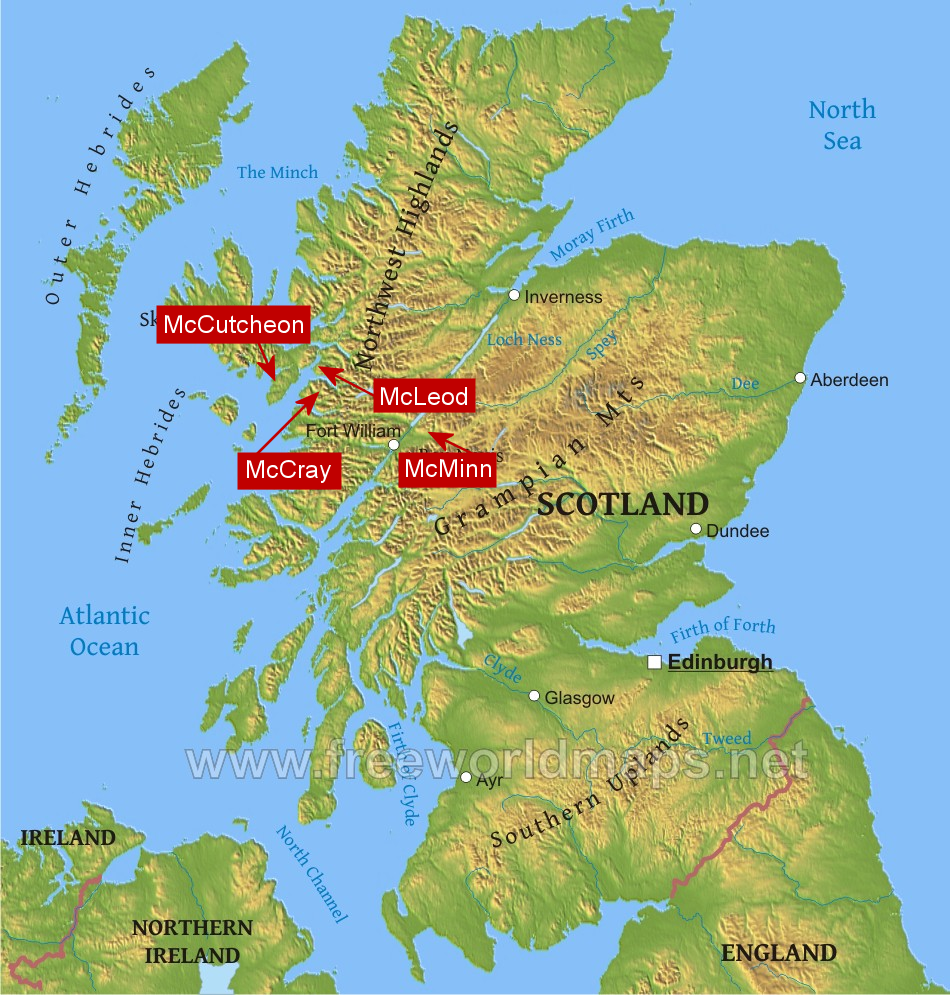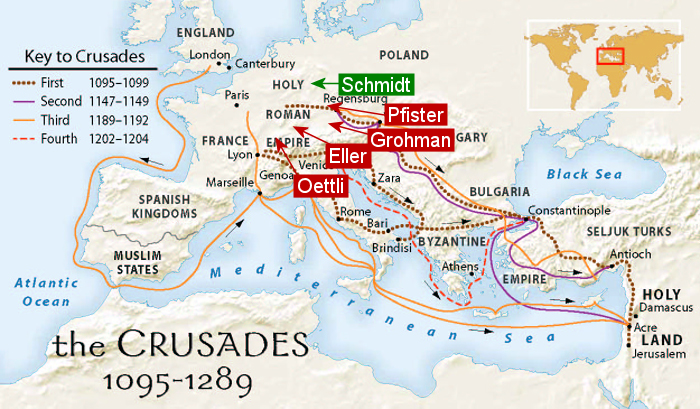Through the written records, our family of Schmidts can trace our ancestry back to a Hessian shepherd named Hans Schmidt, who was born in about 1594, and who died on 18 June 1680 in the town of Blankenbach in the Werra Valley.
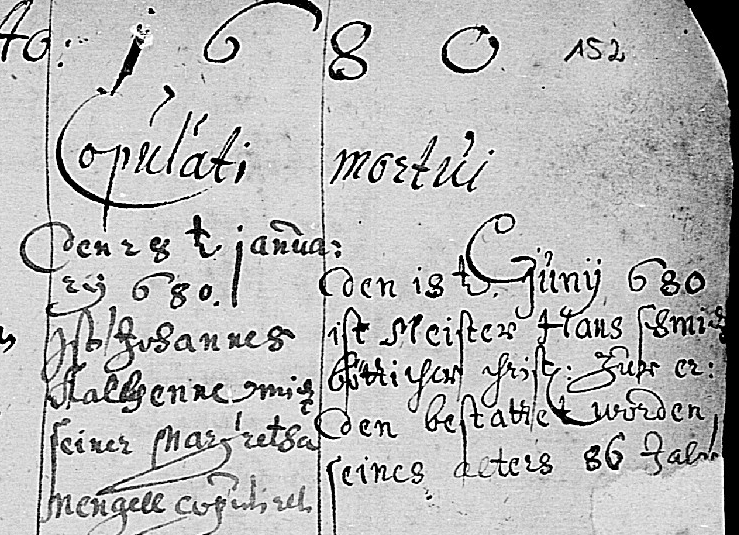
Hans Schmidt death record; Blankenbach, Germany; 18 June 1680
We have his death record (from 1680), we have the record of his third marriage (to Barbara Engeling in 1656), and we have the record of his second marriage (to Catharina Dietz in 1641). We no longer have the record of his first marriage, nor do we have the record of his birth, because of the terrible destructive effects of the Thirty Years War, which ravaged the Hessian region from the 1620s through the 1640s. Therefore, we do not know the names of Hans Schmidt’s parents, and we may never know.
Although the paper trail has gone cold with our ancestor Hans Schmidt, we thankfully live in an era where a new trail can pick up in its place. That trail is DNA. In particular, Y-DNA.
Y-DNA is a unique parcel of DNA that only males possess (hence the term “Y chromosome”). Y-DNA is passed from father to son, almost totally unchanged, generation after generation. Theoretically, every man should have the exact same Y-DNA as his father. Every so often, there is the tiniest mutation in one part of the Y-DNA, but Y-DNA has such integrity that by comparing your Y-DNA to the Y-DNA of population groups elsewhere in the world, you can see where your paternal ancestors came from.
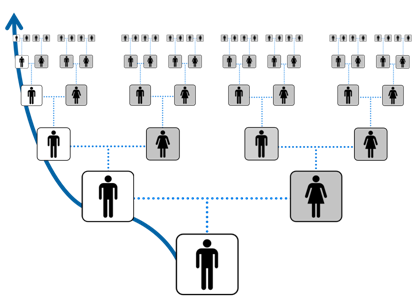
Y-DNA is passed down from father to son in a strictly male line, illustrated by the blue arrow
Schmidt Family Reunion organizer Josiah Schmidt has spent years and a great deal of resources having his own Y-DNA tested and re-tested on behalf of the family, and the results have been interesting. The Schmidt family’s deep ancestry has all the signatures not of Germany, but rather the home of Stonehenge, Loch Ness, kilts and bagpipes: Scotland.
Because Y-DNA takes so much time to mutate and change, when we look at our Schmidt family Y-DNA, we are seeing thousands of years into the past. The several centuries that our ancestors spent in Germany before coming to America was a split-second blink of an eye. Our roots in Scotland go deep.
Several years ago, Josiah’s Y-DNA testing found that our Schmidt Family was a member of the R1b haplogroup, a widespread haplogroup that dominates much of Europe. The R1b haplogroup, defined by a mutation of our M343 genetic marker, came into existence in Western Europe 30,000 years ago. The vast majority of Europeans (particularly British, Irish, French, German, Portuguese, and Spanish) can trace their paternal ancestry back to this one man who lived in Western Europe in about 28,000 BC. This man’s descendants would become some of the first artists of the human race, painting depictions of people and animals in caves in southern France, and fashioning jewelry and primitive musical instruments.
Later, further Y-DNA testing revealed that the Schmidt family’s Y-DNA was also defined by a second mutation, which affected the M269 genetic marker of one of our paternal ancestors who lived sometime between 8,000 BC to 2,000 BC. The first man who experienced this mutation is also the paternal ancestor of much of Ireland and Scotland’s population.
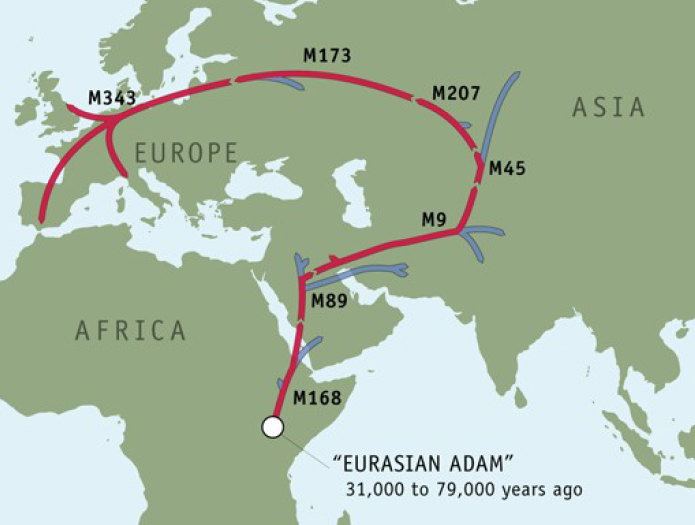
Map of the R1b haplogroup’s migration into Western Europe (Source: Ancestry.com)
This week, however, Josiah received even more refined test results, which show that our Schmidt family belongs to an even more specific subclade, called “R-S1026”. This subclade is strongly associated with Scotland in particular. According to genetic genealogist, Dr. David Dowell, this mutation happened in one of our paternal ancestors about 3500 years ago (in roughly 1500 BC, smack dab in the middle of the Bronze Age). When Josiah was matched up with other men who had taken Y-DNA tests in online databases, the best matches’ names were mostly Scottish names (McLeod, McCray, McCutcheon, McMinn, etc.).
These Scottish matches share a paternal ancestor with our family from about a thousand years ago. This means that if we Schmidts were to trace our ancestry from our father, to his father, to his father, to his father, and so on, in a strictly male line, and if the McLeods, McCrays, McCutcheons, and McMinns were to all do the same, we would all arrive at the same ancestor–likely a Scottish man who lived in the Middle Ages. Interestingly, by pinpointing these particular clans on a map of Scotland, we can see that all these families lived in close proximity to one another in the Western Highlands by the Hebrides Islands. This is very likely where the Schmidts’ paternal ancestry dwelt before one of our ancestors ended up migrating down to Germany.
Map of Scotland with clan names/locations pointed out (Source of original map: FreeWorldMaps.net)
Of course, this Scottish ancestor of ours would have lived before the time that common folk had surnames. Centuries later, one of this man’s descendants would have taken on the surname McLeod and produced the McLeod clan, another descendant would have taken on the surname McCray and produced the McCray clan, and another descendant who somehow ended up in continental Europe took on the surname Schmidt and produced our family.
So, just how did it happen that one of our ancestors left his home amongst the craggy cliffs and murky marshes of upper Scotland, and traversed the European continent to end up in the middle of Germany? There are a few different hypotheses:
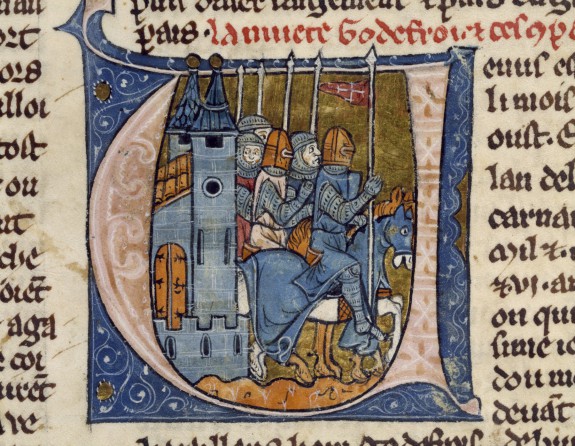
Godfrey de Bouillon and Four Knights (Source: Walters Art Museum via Medievalists.net)
1. The Scottish Crusader
Christianity came to Scotland in the 500s AD, gradually replacing Scottish paganism and putting its own distinct twist on the relatively new religion from Rome. In the Medieval Era, the Protestant Reformation had not yet occurred, and so Scottish Christians were still Roman Catholic. When Pope Urban II issued the call in 1095 AD for all Christian rulers to join in the march to the Mediterranean to conquer the Holy Lands, one of the first to answer the call was the Scottish King Lagman of Mann and the Western Isles (according to Alan MacQuarrie in his dissertation entitled “The impact of the crusading movement in Scotland, 1095-c.1560”, p.56). King Lagman had gotten into a fight with a rebellious brother of his and had blinded him in the scuffle. Lagman was so remorseful that he decided to organize an army of Scots to go fight for the Catholic Church in the Crusade, as an act of penance.
Scottish warriors continued to be involved in further Crusades throughout the ensuing centuries. Our paternal ancestor may have been one of the Scots taken from the British Isles and marched through continental Europe toward the Middle East.
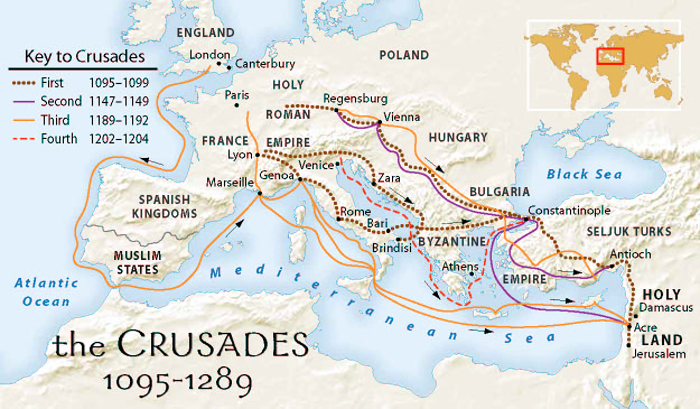
Routes of the First through Fourth Cruades (Source: Resources for History Teachers)
These marches were long and treacherous. Starvation, disease, and death from exposure to the elements caused many soldiers to desert along the way. Our ancestor may have deserted the army along the way and started a new life in Germanic territory.
One of the perks of taking part in the Crusades also entailed the granting of indulgences–the ability to sin without guilt. Many Crusaders took advantage of this by having relations with or raping women in the villages through which they passed. Our Scottish ancestor may have left his Y-DNA behind with a Germanic woman during his march across Europe in this way.
Some evidence to support the Crusader theory is that, when our Schmidt family’s more recent relatives (from after 1000 AD) are plotted on a map, they appear to be concentrated in Switzerland, near France and Italy, and trail their way up to Hesse, where our ancestor Hans Schmidt was born in about 1594. These families include families named Oettli, Eller, Pfister, Grohman, etc. It is possible that the Germanic branch of our family started on one of the Crusader routes in the late 11th century, and successive generations migrated their way northward through Switzerland and into Germany. Then, around the 1300s AD, when Europeans began taking surnames, the various branches of the family took surnames like Oettli, Eller, Pfister, Grohman, and–of course–Schmidt.
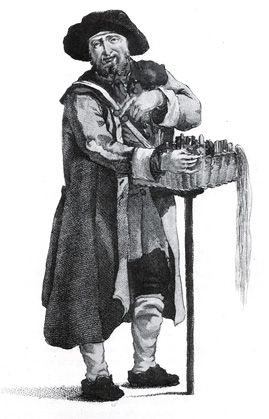
Medieval Peddler (Source: Hieronymous Hess, “The Peddler”)
2. The Scottish Peddler
Another hypothesis about how our Y-DNA got from Scotland to Germany is through the flourishing trade between Scotland and the Hanseatic port cities of Germany (like Hamburg, Bremen, and Lübeck). From the 1300s to the 1500s, Scottish salesmen ventured into Germany to peddle their goods in the German cities and countryside (according to Morvern French of the University of St. Andrews). Perhaps our Scottish ancestor landed at a northern port city and peddled his way down to Hesse, settling down eventually into a more agrarian lifestyle.
This may also explain the chain of distant relatives trailing into Switzerland. After settling in Hesse, one of his descendants may have ventured a little further southward into Germany. Then, a later descendant may have ventured even further southward into Switzerland, and so on.
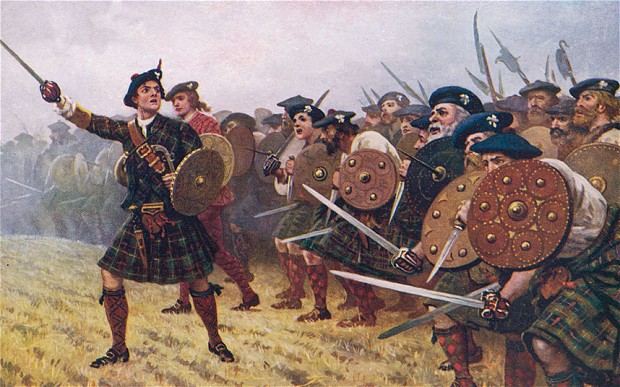
Medieval Scottish Warriors (source: The Telegraph)
3. The Scottish Soldier
Europe in the Middle Ages was marked by countless wars and civil wars. Scotland often found itself allied with France against England, and soldiers were exchanged back and forth between the British Isles and continental Europe. If a Scottish soldier saw better prospects in continental Europe, he might desert the army and re-settle there. Or, he might have impregnated a woman in continental Europe during one of his tours. Or, if he had been on the losing side of a war, he might have been banished from his home in Scotland and exiled to continental Europe.
There are countless wars throughout the Medieval Era that may have brought our paternal ancestor from Scotland down to Germany, where our branch of the family took root.
Because written records, especially for non-royalty and non-nobility, are mostly non-existent in Europe before the 1600s, we may never know for certain how and why our Schmidt family, which can be traced back to the late 1500s in Germany, has all the genetic indicators of Scottish heritage. But because DNA cannot lie, we can be certain that our paternal ancestors called Scotland home for thousands of years, before their several-hundred-year layover in Germany. As the burgeoning field of DNA research becomes ever more refined and precise, we will be able to discover more and more detail about our Schmidt family’s deep history. Until then: Fair faw and lang mayyer lum reek!
Discover more about your Schmidt ancestry at the record-breaking Schmidt Family Reunion this July 30-31, 2016 in Spencer, Iowa! RSVP today!

